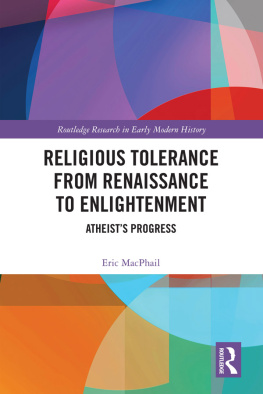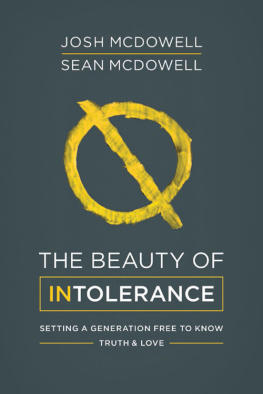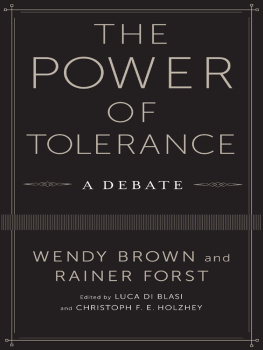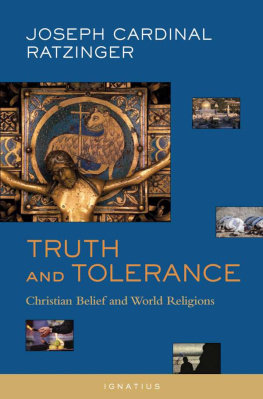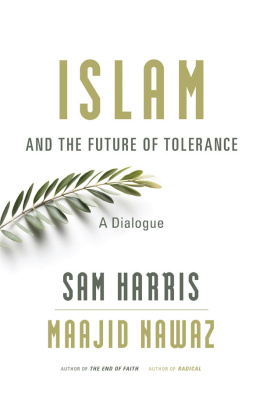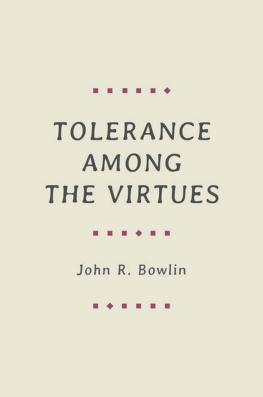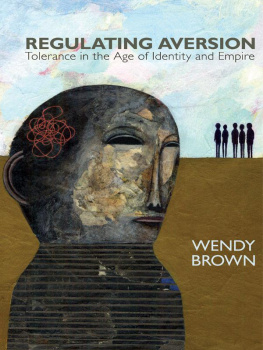Zero Tolerance or Community Tolerance?
This book is dedicated to Paul Ormerod, 19611998, and all his friends.
First published 1999 by Ashgate Publishing
Reissued 2018 by Routledge
2 Park Square, Milton Park, Abingdon, Oxon, OX14 4RN
52 Vanderbilt Avenue, New York, NY 10017
Routledge is an imprint of the Taylor & Francis Group, an informa business
Copyright Sandra Walklate and Karen Evans 1999
All rights reserved. No part of this book may be reprinted or reproduced or utilised in any form or by any electronic, mechanical, or other means, now known or hereafter invented, including photocopying and recording, or in any information storage or retrieval system, without permission in writing from the publishers.
Notice:
Product or corporate names may be trademarks or registered trademarks, and are used only for identification and explanation without intent to infringe.
Publishers Note
The publisher has gone to great lengths to ensure the quality of this reprint but points out that some imperfections in the original copies may be apparent.
Disclaimer
The publisher has made every effort to trace copyright holders and welcomes correspondence from those they have been unable to contact.
A Library of Congress record exists under LC control number: 99072973
ISBN 13: 978-1-138-38662-4 (hbk)
ISBN 13: 978-0-429-42669-8 (ebk)
The work presented in this book was supported under the ESRCs Law and Social Order Initiative grant no. L21025036 and was conducted between February 1994 to August 1996. During that time the project was supported in a range of different ways by people too numerous to mention. However particular credit should be given to Penny Fraser who started as part of the project team and subsequently secured a post with NACRO and Linda Harvey who ended as part of the project team. Each of these people, in quite different ways, left their mark on the work produced here. Professor Tim Hope, as the director of this initiative also leant his support at crucial moments. In addition it is important to mention particular people who eased the research process for us especially Nigel Bonson and Ann Weir of Safer Salford, Councillor Jim King, the (then) Chief Superintendent Colin Cramphom and (then) Superintendent Roger Roberts. Indeed Safer Salford, Salford City Council, and the police officers of F Division of Greater Manchester Police could not have been more helpful or accommodating throughout the course of the research. We hope we have repaid their help with the arguments presented here.
Particular mention should be made of our interviewing team who worked diligently, professionally and reliably; Linda Burch, Gary Kelly, Tony Kearon, Gaynor Bagnall, Jane Franklin, Elaine Lusty, Caroline Clayton, Lynne Greenwood, Elliot Costello, Brian Macdonald and Prue Yeoman.
Of course, we are also grateful for the support and participation of all the residents, community groups, local agencies and businesses who took part in the research. Without their willing help and assistance this work would not have been possible. Despite living in areas over-researched such willingness to help should not be taken for granted. Unfortunately we cannot name all the people who participated and helped in this way as we undertook to maintain both confidentiality and anonymity.
An especial thanks is due to Sheila Walker, who prepared the camera ready copy for this book. Last but by no means least Karen would like to acknowledge the support of Colin Morrison and Sandra, that of Ron Wardale who actually thought of the title of this book and much more besides.
Parts of this text have appeared elsewhere as journal articles and we would like to acknowledge the following for copyright permission to reproduce some of that material here; Sociological Review , vol. 44. no. 3. August 1996 Evans, Fraser and Walklate; Whom can you trust? The politics of grassing on an inner city housing estate. The British Journal of Sociology, vol. 49, no. 4 December 1998 Walklate; Crime and community; fear or trust? Theoretical Criminology (Sage Publications) vol. 2 no. 4 November 1998 Walklate; Excavating the fear of crime: fear, anxiety or trust? Crime Prevention and Community Safety: An International Journal (1999) Evans and Walklate; Zero tolerance or community tolerance: police and community talk about crime in high crime areas, vol.l no. 1 and Walklate; Some questions about community safety partnerships, vol. 1, no. 3; published by Perpetuity Press Limited, P.O. Box 376, Leicester, LE2 3ZZ. And finally, Evans (1997) Its alright round here if youre local: community in the inner city. In P. Hoggett (ed) Contested Communities. Experiences, Struggles, Policies. Bristol: Policy Press.
Karen Evans
Sandra Walklate
Manchester, February 1999
Part One:
Crime and Community
Preamble
In 1997 the new Labour government made clear its commitment to ensuring that crime prevention would become a statutory duty of local government (indeed this commitment had been pledged by the then Opposition spokesman on crime Jack Straw, at a conference, Crime the Local Solution, organised by the Local Government (LGA) Association in March 1997). In die light of this commitment local authority personnel up and down Britain were charged with the writing of corporate community safety strategies. At the same time the 1996 Intemationl Criminal Victimisation Survey suggested that these personnel will be working in a context of comparatively high national rates of crime which the British Crime Survey of 1996 estimated had risen 91% since 1985. This fast growing rate of crime has initiated much discussion in the public domain around law and order issues. Much of this discussion has revolved around the impact of such a high crime rate, and associated significant fear of crime, on the quality of life of people living in England and Wales. There has also been a great deal of debate on differing ways to manage die crime problem (Garland, 1996) with the significant emergence of the concept of community safety in die mid 1980s driven by the idea that the solution to an areas crime problems lay in co-operation between community and law-enforcement agencies. The 1990s, however, has seen the debate around the concept of Zero Tolerance policing exported from America to Britain, which arguably signals a move away from the emphasis on community solutions to crime problems. Although ostensibly closely linked to the idea of community safety, zero tolerance in fact substitutes the notion of a complete respite from crime and incivilities for the community, where no infringement of criminal or civil statutes is tolerated. The zero tolerance policing style is justified by reference to community wants and needs but, due to its blanket coverage, it cannot recognise different degrees of tolerance which exist within a community, or between one community and another. Zero Tolerance policing posits a crime-free environment as the goal of every law-abiding individual, without offering any degree of subtlety or attempting to understand the many dynamics of community relationships which are in existence or the diversity of responses to crime demonstrated by individuals.
Introduction
The arguments put forward in this book look to introduce such a subtlety to the understanding of the management of crime in high crime communities and derive from a longitudinal research study which took place over a two and a half year period. From 1994 to 1996 researchers based at the University of Salford and the University of Keele embarked on research into two similarly structured neighbourhoods within the city of Salford in the North of England. This research set out to situate an understanding of the risk from and fear of crime in a comparative, urban context to uncover how people who live, work and go to school in designated high-crime areas manage their routine daily lives and construct their own responses to risk of and fear of crime. We were interested to document the personal and individual ways in which the research subjects managed their own fear of crime and to what extent these management practices were informed by their own perceptions as to which actions were risky and which were safe within a local context.



